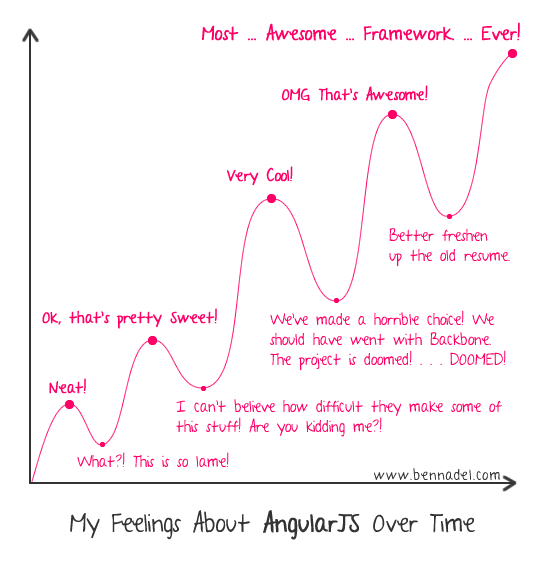A quick and simpleTest: http://scrumbutt.me/. I just gave a random shot. Result:
Friday, November 21, 2014
Thursday, November 20, 2014
About Definition of Done (DoD)
Ilan Goldstein points out that there cannot be any one standard definition of done (DoD) because it inevitably evolves. However, for beginners he suggests some typical DoDs. As a general rule, you should develop DoDs on different levels, e.g. one for Release, User Story and Task. An example DoD for level Task might be:
- Code has been unit-tested.
- Code has been peer reviewed (if continual pair programming isn't being conducted) to ensure coding standards are met.
- Code has been checked into source control with clear check-in comments for traceability
- Checked-in code doesn't break the build (see Shortcut 18).
- The task board has been updated and remaining time for the task = 0 (see Shortcut 21)
You can find the book website including TOC and sample chapters at Scrum Shortcuts Without Cutting Corners
Tuesday, November 18, 2014
Anregung: Flake Ids
Immer mal wieder stellen wir fest, dass das vielen DB-Implementierungen zugrundeliegende Identifier-Konzept ziemlich 90er ist und aktuelle Anforderungen nicht gut erfüllt. Kurz gesagt wird dabei der zur Verfügung stehende 64-Bit Wertebereich anhand des zu erwartenden Datenaufkommens und der vorab bekannten Anzahl der Standorte aufgeteilt.
Wednesday, November 12, 2014
crashrpt (Google)
Some time ago, i was looking for a crash dump library for C/C++ on Windows and found crashrpt which is a Google Library which supports collecting Mini-Dumps, Screenshots, Logs etc. as well as handling some typical pitfalls like thread hooking. The first impression was very good. Finally, it is available as NuGet-Package CrashRpt.CPP.
Friday, November 7, 2014
Hanselman about JSONx: Inception-Style Nested Data Formats
In Inception-Style Nested Data Formats Scott Hanselman comments on IBMs JSONx-Standard that supports representig JSON in XML. For good reason, he asks: "Why would one inflict this upon the world?". The comments section refer to a lot of projects you definitely do not want to be part of.
All about Angular 2.0
Seit Rob Eisenberg, der Erfinder von Durandal und des in u.a. TACON extensiv genutzten Frameworks Caliburn.Micro an Bord des Angular-Teams bei Google ist interessiere ich mich mehr und mehr für AngularJS. Erste Versuche sind wow! Eine oft beobachtete Lernerfahrung sieht allerdings eher so aus:
[caption width="545" align="alignnone"] My Experience With AngularJS[/caption]
My Experience With AngularJS[/caption]
Rob Eisenberg ist bei Google um die nächste große Angular-Version mit zu entwerfen, eine große Sache. Im September hat Rob schon im Adventures in Angular-Podcast ng 2.0 with Rob Eisenberg über Angular 2.0 gesprochen.
In seinem gestrigen Blogeintrag All About Angular 2.0 stellt Rob das Design von AngularJS 2.0 zum ersten Mal konkret mit Code-Beispielen vor.
[caption width="545" align="alignnone"]
 My Experience With AngularJS[/caption]
My Experience With AngularJS[/caption]Rob Eisenberg ist bei Google um die nächste große Angular-Version mit zu entwerfen, eine große Sache. Im September hat Rob schon im Adventures in Angular-Podcast ng 2.0 with Rob Eisenberg über Angular 2.0 gesprochen.
In seinem gestrigen Blogeintrag All About Angular 2.0 stellt Rob das Design von AngularJS 2.0 zum ersten Mal konkret mit Code-Beispielen vor.
Thursday, November 6, 2014
Subscribe to:
Comments (Atom)
